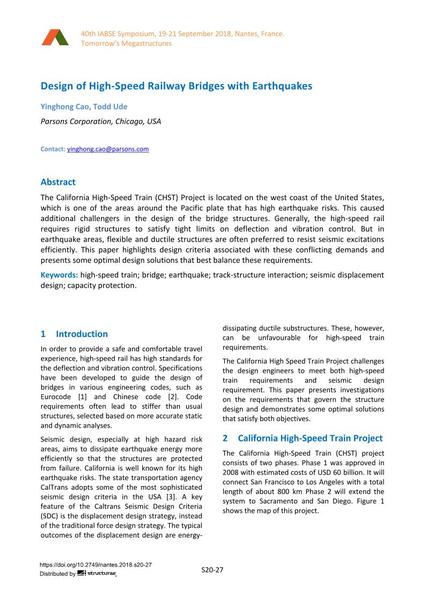Design of High-Speed Railway Bridges with Earthquakes

|
|
|||||||||||
Bibliographic Details
| Author(s): |
Yinghong Cao
(Parsons Corporation, Chicago, USA)
Todd Ude (Parsons Corporation, Chicago, USA) |
||||
|---|---|---|---|---|---|
| Medium: | conference paper | ||||
| Language(s): | English | ||||
| Conference: | IABSE Symposium: Tomorrow’s Megastructures, Nantes, France, 19-21 September 2018 | ||||
| Published in: | IABSE Symposium Nantes 2018 | ||||
|
|||||
| Page(s): | S20-27 | ||||
| Total no. of pages: | 8 | ||||
| DOI: | 10.2749/nantes.2018.s20-27 | ||||
| Abstract: |
The California High-Speed Train (CHST) Project is located on the west coast of the United States, which is one of the areas around the Pacific plate that has high earthquake risks. This caused additional challengers in the design of the bridge structures. Generally, the high-speed rail requires rigid structures to satisfy tight limits on deflection and vibration control. But in earthquake areas, flexible and ductile structures are often preferred to resist seismic excitations efficiently. This paper highlights design criteria associated with these conflicting demands and presents some optimal design solutions that best balance these requirements. |
||||
| Keywords: |
bridge earthquake track-structure interaction high-speed train seismic displacement design capacity protection
|
||||
